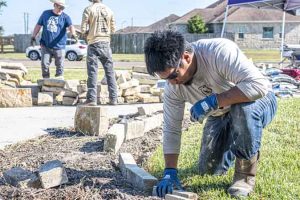Understanding Tree Root Ingress Across Different Soil Types
3 min read
Tree root ingress, the process by which tree roots penetrate and interact with soil, varies significantly depending on soil type. Whether you’re a gardener, landscaper, or homeowner, understanding these dynamics is crucial for maintaining healthy trees and preventing potential damage. In this article, we explore how tree root ingress differs across various soil types and provide insights into effective tree care practices.
The Impact of Soil Types on Tree Root Ingress
- Clay Soil: Clay soil is known for its compact and dense nature, characterized by tiny particles that hold together tightly. This soil type poses challenges for tree roots as it limits their ability to penetrate deeply. Tree roots in clay soil often spread horizontally rather than vertically, making trees susceptible to instability during strong winds or heavy rains. Moreover, clay soil can retain excessive moisture, potentially leading to root rot if drainage is inadequate.
- Sandy Soil: Sandy soil, composed of larger particles with significant gaps between them, offers better drainage and aeration compared to clay soil. Tree roots in sandy soil can penetrate deeply and spread widely, exploring a larger volume of soil in search of water and nutrients. However, sandy soil tends to dry out quickly and lacks the ability to retain essential nutrients, requiring more frequent irrigation and fertilization to support healthy tree growth.
- Loamy Soil: Loamy soil is considered ideal for tree growth due to its balanced texture, combining elements of clay, silt, and sand. It offers good drainage while retaining moisture and nutrients necessary for robust root development. Trees planted in loamy soil often exhibit extensive and well-established root systems, promoting overall tree health and stability. This soil type supports a diverse range of plant species and is highly conducive to gardening and landscaping.
Factors Influencing Tree Root Ingress
Several factors influence how tree roots interact with different soil types:
- Water Availability: Adequate water availability is crucial for root growth. Soil types that retain water without becoming waterlogged, such as loamy soil, are favorable for healthy root development.
- Nutrient Retention: Soil fertility and nutrient availability affect tree root ingress. Loamy soils, rich in organic matter, provide essential nutrients for sustained tree growth, while sandy soils may require supplementation with fertilizers.
- Soil Compaction: Compacted soils, often a result of heavy foot traffic or construction activities, restrict root penetration and nutrient uptake. Aerating compacted soil can improve its structure and support healthier root growth.
Strategies for Managing Tree Root Ingress
To optimize tree health and mitigate challenges related to root ingress, consider the following strategies:
- Soil Amendment: Incorporate organic matter such as compost or mulch to improve soil structure and fertility. This enhances water retention and nutrient availability, supporting vigorous root growth.
- Mulching: Apply a layer of mulch around trees to regulate soil temperature, suppress weed growth, and retain moisture. Mulching also protects shallow roots from temperature fluctuations and physical damage.
- Proper Irrigation: Ensure trees receive sufficient water, especially during dry periods, to maintain soil moisture levels conducive to root growth. Deep watering encourages roots to grow deeper into the soil, enhancing tree stability and resilience.
Conclusion
In conclusion, understanding how Tree Root Ingress Reading varies across different soil types is essential for effective tree care and landscaping practices. Each soil type presents unique challenges and opportunities for tree root development, influencing overall tree health and longevity. By adopting appropriate management techniques and considering soil characteristics, homeowners and professionals can create environments that support thriving landscapes and sustainable tree growth.
By prioritizing soil health and implementing best practices in tree care, you can enhance the aesthetic appeal of your landscape while promoting the long-term health and resilience of your trees. Whether you’re planting new trees or managing existing ones, thoughtful consideration of soil type and root ingress dynamics is key to achieving successful outcomes in tree care and landscaping endeavors.



